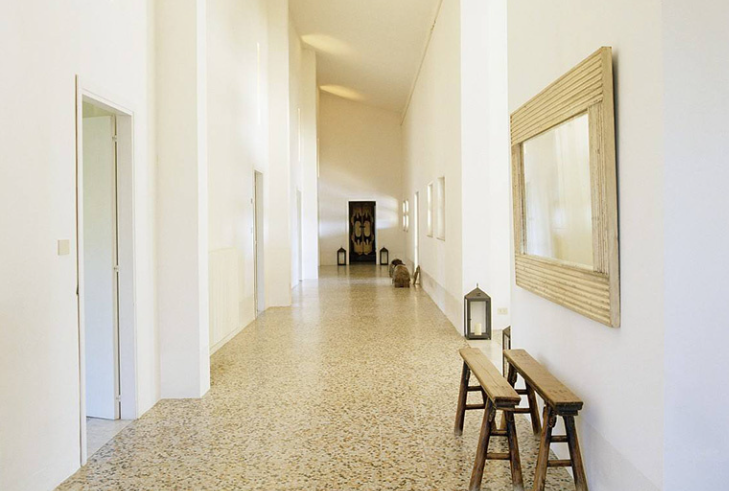The principle of stone polishing is mainly
reflected in two aspects: the principle of particle grinding; the principle of
physical chemistry.
1. Particle grinding: When the abrasive
particles are from coarse grinding to polishing, the traces of abrasive
grinding on the stone surface change from coarse to fine and then there are no
traces visible to the naked eye, and the surface is smooth, flat and delicate.
When it reaches 110 microns, the machined surface will appear specular luster,
radiant and bright in color. Particle grinding consists of the following
processes:
① Coarse grinding: It is required that the grinding tool has a deep
cutting depth, high grinding efficiency, rough grinding lines, and rough
surface. Saw blade marks and grind the flatness and modeling surface of the
product in place;
②Semi-fine grinding: Remove the rough grinding marks to form new
finer lines, and the product processing surface is smooth;
③Fine
grinding: After fine grinding, the pattern, the particle and the color of the
product have been clearly displayed, the surface is fine and smooth, and it has
a faint gloss;
④The surface is getting smoother and smoother, and the gloss is
about 40~50 degrees;
⑤Polishing: The surface is as bright as a mirror, with a certain
specular gloss (above 85 degrees).

2. Physical and chemical principles: There
are two polishing processes, namely "dry polishing and wet polishing".
The polishing grindstone is between "dry and wet" when the stone
product has a physical and chemical effect. Dry polishing is when the
temperature of the stone surface increases. The water evaporates, resulting in
an increase in the concentration of the polishing grindstone, thereby achieving
a strengthening effect, and the gloss of the product begins to reach the ideal
requirement, with a gloss of 85 degrees or higher. The stone polishing
grindstone is polished on the processed product. After the polished product is
hot, add water to the surface of the board to cool down. It is not allowed to
add water continuously or a large amount of water. Otherwise, the lubrication
effect of water will make the polishing impossible. To achieve the desired effect,
dry polishing cannot be used entirely. Excessive temperature will burn the
board surface and cause cracks on the board surface. Generally speaking, after
the product is finely ground, the gloss of the product is about 40~50, while
some stone materials cannot reach the above gloss after polishing and fine
grinding. The gloss after grinding is only between 20 and 30 degrees, which is
not enough to explain with the previous particle grinding principle. This
product is polishing "dry and wet", the temperature is raised, and
the temperature is lowered. The polishing process is strengthened, and physical
and chemical reactions occur. The product after "dry polishing, wet
polishing", the gloss gradually increases, the gloss is more than 85
degrees.
TransGrind supply different kinds of diamond tools for floor grinding and floor polishing.
We have supplied many different kinds of diamond tools for many customers, such
as Scanmaskin tools, Lavina tools, Klindex tools, Husqvarna tools, HTC
tools etc. Welcome to know more about our products by clicking
pictures to get into our official web if you are interested.


Z0OB_%E5%89%AF%E6%9C%AC.jpg)


Comments
Post a Comment